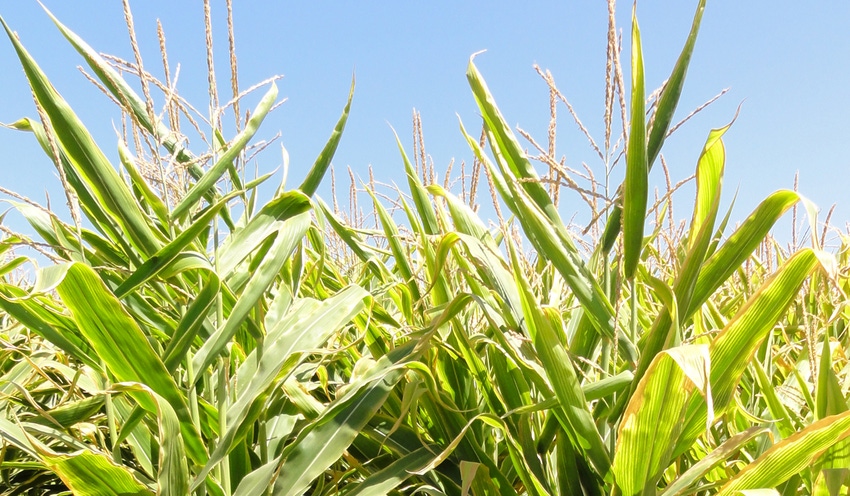July 10, 2012

Tassels became visible in early-planted cornfields around Minnesota at the beginning of July, coinciding with a week of unusually hot and continually dry weather. While some isolated areas in Minnesota received a little rain late last week, most did not.
This week, a large percentage of the corn in Minnesota will be pollinating. Although air temperatures across Minnesota during the next 10 days are forecast to be near optimal for corn (mid- to upper-80s), there is little chance of rain during this time. How will these weather conditions affect the corn crop?
The critical period for avoiding stress in corn is during the time span two weeks before and two weeks after tassel emergence, with the most important time being the eight days after tassels emerge, also known as the pollination period. Drought and heat stress around tassel emergence can affect the success of pollination and the number of kernels per ear.
Heat stress generally has less of an impact on corn at pollination than water stress, and does not occur until temperatures exceed 86 degrees with dry soils, or 92 degrees with adequate soil moisture and high humidity. With high temperatures, corn plants require more energy to maintain themselves. Temperature and/or water stress before pollination can reduce the number of potential kernels per row, while combined temperature and water stress shortly after tassels emerge can cause exposed silks to desiccate and not accept pollen.
Fortunately, much of the corn that was pollinating last week during the high temperatures was not under severe moisture stress, as the roots in these early-planted fields were accessing water deep in the soil. Thus, the direct impact of last week’s high temperatures on pollinating corn in Minnesota was likely low. Instead, the amplified loss of soil moisture as a result of high temperatures likely had, and will continue to have, a greater impact on the crop.
Water stress before pollination affects the number of potential kernels per row. It can also cause silk emergence and elongation to slow while hastening or not affecting pollen shed, resulting in asynchrony between pollen shed and silk emergence. This asynchrony can result in poor kernel set and ears with missing kernels. The success of kernel set can be evaluated throughout and soon after the pollination period by carefully unwrapping husks and gently shaking ears, as silks detach from the ear within a couple days after successful pollination.
However, water stress following successful pollination is more common and will likely be the main result of dry conditions this year. This water stress results in the loss of kernels at the tips of ears. But kernel loss can occur in other patterns on ears if water stress is intense enough or combined with other stresses.
The current dry conditions in many parts of the state, which are expected to persist, could affect the success of pollination in some areas, but will more likely result in the loss of kernels following pollination. This loss of kernels could be a little greater than normal, but will depend on current soil moisture levels and future rainfall. Even so, the corn in Minnesota is in far better shape than that in east-central Corn Belt states such as Illinois, Indiana and Ohio.
For more educational resources on corn production in Minnesota, visit the University of Minnesota Extension’s corn website at www.extension.umn.edu/corn.
Jeff Coulter is a corn agronomist with University of Minnesota Extension.
You May Also Like




